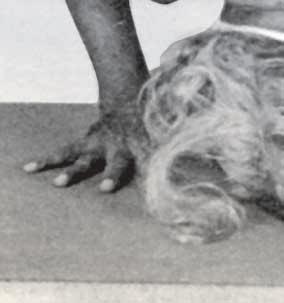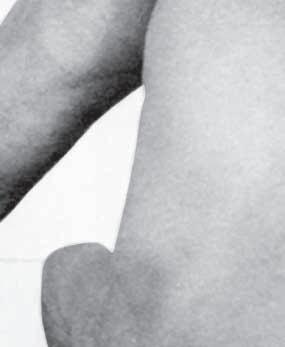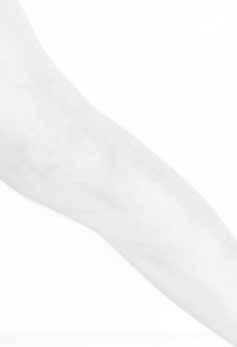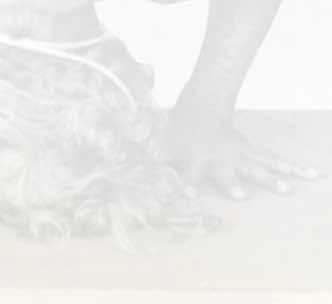
7 minute read
Yoga and Scoliosis: Possibility within Limitation – Bobbie Fultz
from Yoga Samachar SS2010
by IYNAUS


Advertisement

YOGA AND SCOLIOSIS: pOSSIbILITY WIThIN LIMITATION
by bobbie Fultz

A consistent, regular practice of yoga can offer relief from scoliosis and its side effects, including back pain, sciatica, intervertebral disc prolapse, sacroiliac issues, and tingling in the hands. The amount and intensity of practice required varies according to the degree of misalignment, overall muscle tone, and age. Scoliosis is a very individual condition; no two cases are exactly the same.

It wasn’t scoliosis that brought me to yoga; I was already watching Richard Hittleman’s “Yoga for Health” on TV in the early 1960s. Yoga continued to interest me through college: many were trying out simple asanas as part of the search for expanded consciousness. I wandered through the variations of Integral Yoga, Sivananda Vedanta Yoga, Himalayan Yoga, and Kripalu Yoga, never thinking about my scoliosis. I didn’t notice that my body was any different. I could do the stuff about as well as everyone else.


I suffered spasms and back pain as my scoliosis deteriorated, but I got on as best I could. Only when I met a pair of yoga teachers with more ambition for their students did I understand that asanas were supposed to change the body. In 1987, Sharon Gannon and David Life, the founders of Jivamukti Yoga, took me to a question-andanswer session with B.K.S. Iyengar at St. John the Divine Cathedral in New York. Mr. Iyengar talked about the way yoga can change a spine with scoliosis and offered to work with me if I would come to India. I opted to take local classes first, which became a way to find a different relationship inside my body. My home practice began when I bought a piece of webbing on Canal Street, tied it to the window bars of my East Village apartment, and learned to do supported dog pose.

Two years later I went to Pune, where I had two-hour classes with B.K.S. Iyengar and was adjusted under his direction by senior teachers. It was totally overwhelming. This was my first exposure to working with ropes and the various wooden props. Somehow, I returned to the Asana Hall day after day for the entire two months. My view of asana practice was never the same. I have returned to Pune six times.
Various sequences and a multitude of adaptations of the classic asanas have been given for scoliosis, but what is more significant is the change in the way I live in this body. The sensation of scoliosis is deeper than the musculoskeletal body, and what yoga has to offer is bigger than back pain management. Some who see me on the teacher’s mat are let down at the amount of distortion still in my spine. Even surgeons admit that all their instrumentation and scientific know-how cannot completely straighten or untwist the


spine. Their goal is to stabilize deterioration and level the shoulder girdle and the pelvis. Yoga offers more: a living experience that is deeper and more profound.
Iyengar Yoga is known for therapeutic remedies, but it is the way the method allows us to penetrate more deeply that makes worthwhile the aggravation and agony of pounding out the lumps and bumps of the physical body. To open 30 years of scoliosis is not a task without sensation. And it is a continuous struggle against the desire of the scoliosis to control the body. Mr. Iyengar is a great psychologist. He can challenge you beyond anything you thought yourself capable of. This is an inherent part of his method. As the practitioner returns to the mat, day after day and year after year, he or she comes to see the Self more clearly. The mat work may be focused on the physical, but the inward experience is without limitation.
Sequences and specific shapes of the preliminary poses are productive for relieving scoliosis. But it is up to the individual to apply the process and to be willing to struggle for change. There are no secrets that are for scoliosis only. The nature of the asana practice is to challenge the body to find its own balance. The body needs to stay in the shapes long enough to adapt the interior sense of balance with gravity. The work is not easy. Resting on a bolster does not make lasting change; effort is the only thing that brings results.
A weekly class is not enough yoga…A daily home practice is required, long and intense enough to impact a structural scoliosis.
The two major categories of scoliosis are functional and structural. Functional scoliosis is more about the connective tissues, which are softer and react quickly to yoga practice. Structural scoliosis is embedded in the shape of the joints, sometimes in the form of the bones themselves, and requires much more intense work to create lasting change in alignment. A structural scoliosis will have a functional overlay that responds quickly to the initial introduction to yoga. A functional scoliosis can harden as the body ages if nothing is done to stabilize the situation.
A weekly class is not enough yoga for either category. A daily home practice is required, long and intense enough to impact a structural scoliosis. Because the tendency for degeneration involves the nervous system, a lifelong yoga practice is needed to stabilize and support alignment in the spine. The tendency for deterioration corresponds to the stages of life: puberty, childbirth and menopause for women, old age for both genders.
Twelve million people are affected with scoliosis worldwide, with seven million in the United States alone. The good news is that the side effects of lifelong yoga practice can be Self-realization and increased consciousness in the experience of embodiment. Every student who comes to yoga practice makes discoveries and struggles with physical issues. The point of the physical practice is to offer the body–mind–sensory perception technique and tools to come into a balance of health and well being.
Progress for the student with scoliosis is measured in refinement of actions, not in heavier and more physically demanding forms. It is not a contest as to whether the practitioner can “do the pose.” The point is whether the asana and adaptation offer something to progress toward balance in health of the body–mind. Since a twisted spine influences sensory perception, sometimes even the thought process, the internal change of releasing the grip of scoliosis can be very profound. A heavy twist in the spinal column can contribute to a depression, a sensation of being in a downward spiral. The central nervous system inside the spinal column is being twisted in a downward drag with the force of gravity. This is a physical fact and not a separate mental issue. Changing the impact of scoliosis offers much more than pain management for backache.
The use of props and opened forms of the asanas are significant in practice for the misaligned spine. This gives the body the sense of direction, away from the momentum of the degenerative condition and the drag of gravity. It takes time spent in those opened forms to change the gripping pattern of muscles and to reorient the sense of balance in the righting mechanism of the inner ear and brain. Rope traction is very helpful, but strength work is necessary to maintain what is achieved during traction. Everyone enjoys the relief of rope traction; but if the grunt work is skipped, hanging on ropes can actually destabilize the spine and can contribute to faster deterioration. Refinement of action and attention to spatial alignment are critical keys to change. This is the repose that comes from the inside out during the practice. And the work on the two sides is very different. Scoliosis is a lateral deviation of the spine. The left and the right sides differ; so, too, do the front and the back of the two sides. Symmetrical adjustment will not change an asymmetrical situation.
This can all be confusing, even disorienting to the student inside this situation. It takes great determination and fortitude to use yoga to bring about change. The sensations are not always pleasant. The process may not be as straight-ahead and progressive as one would like. There can be stages when the scoliosis fights to maintain its grip on the body, resulting in muscle spasms, vertigo, or nausea. Adjustments and props that worked yesterday suddenly are of no help










